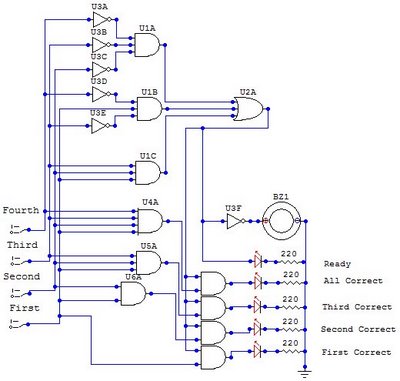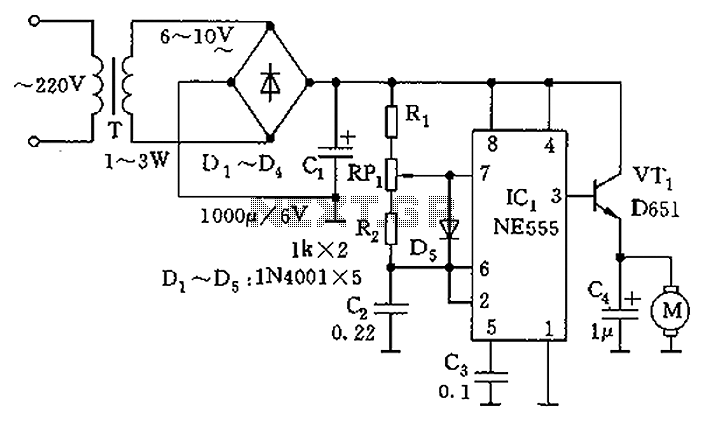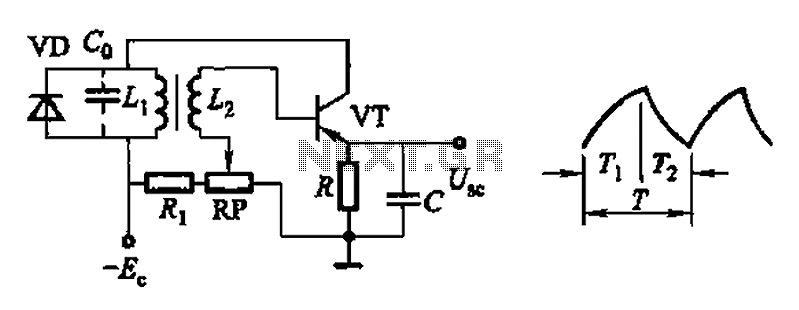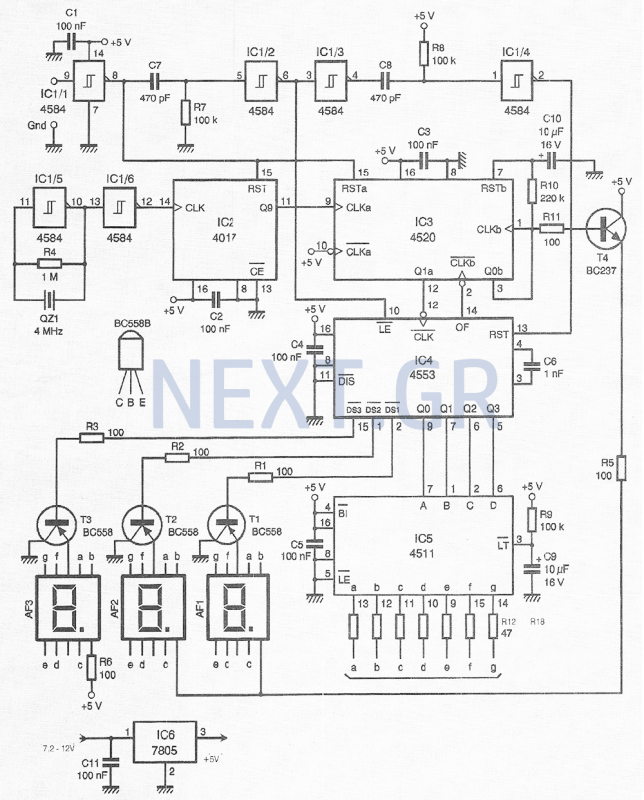
Clap switch circuit
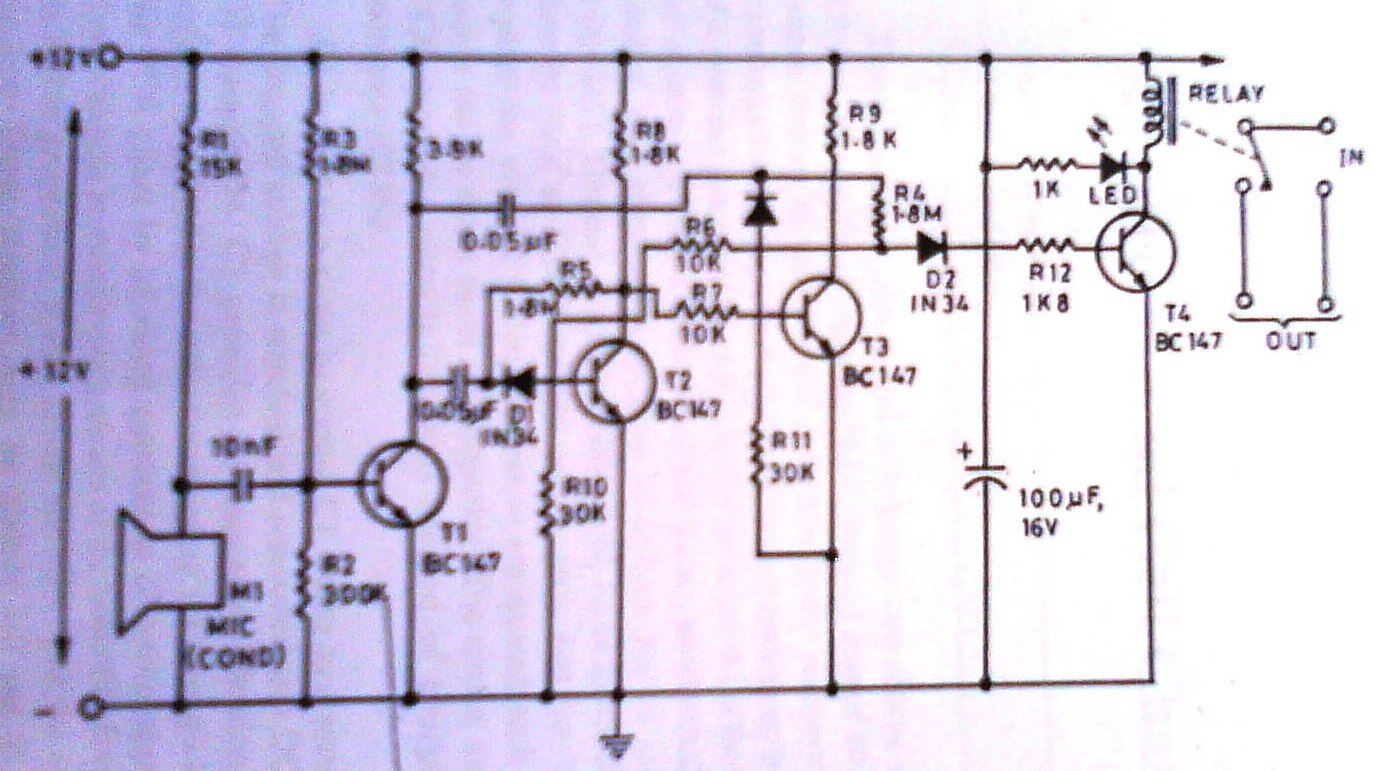
This clap switch can turn on and off a light, fan, music system, or alarm—virtually any gadget—at the sound of a clap. The most remarkable feature of this design is its ability to provide efficient two-state control without the use of operational amplifiers, counters, timers, or flip-flops; it utilizes only four transistors. The design illustrates how basic circuits can perform complex tasks. The sound is detected by a small button microphone (condenser microphone), whose internal FET is biased by resistor R1. The signal is amplified by transistors T1, T2, and T3, while T4 provides the remaining control functions. There is not much to elaborate on, but careful observation of the design reveals much. T4 drives a relay, which is further used to control the load, as shown in the schematic. The contacts of the relay determine the loads it can handle.
The clap switch circuit operates by detecting the sound of a clap through a condenser microphone. This microphone converts sound waves into an electrical signal, which is then processed by the circuit. The internal FET of the microphone is biased by resistor R1, ensuring that it operates within its optimal range to detect sound effectively.
Once the sound is detected, the initial signal is amplified by transistor T1. This amplification is crucial because it strengthens the weak signal generated by the microphone, allowing it to be further processed by subsequent stages. Transistors T2 and T3 continue the amplification process, ensuring that the signal reaches a sufficient level for the control functions to be executed.
Transistor T4 plays a pivotal role in the circuit, acting as a switch that controls the relay. When the amplified signal meets a certain threshold, T4 is activated, allowing current to flow to the relay coil. This action closes the relay contacts, thereby enabling the connected load, such as a light or fan, to turn on or off based on the sound input.
The relay used in this circuit is vital for controlling higher power loads, as it isolates the low-power control circuit from the high-power devices. The specifications of the relay, including its contact ratings, determine the types of loads that can be controlled. The schematic provides a visual representation of the connections and components within the circuit, illustrating the pathways through which the electrical signals flow.
In summary, this clap switch circuit exemplifies the effectiveness of simple electronic components to create a functional device capable of controlling various appliances through sound detection. Its design emphasizes the potential of basic circuits to fulfill complex operational roles without the need for more advanced components.This clap switch can turn on and off a light, fan, music system, alarm. virtually any gadget, at the sound of a clap. The most amazing part of the design is that it gives an a efficient two state control without employing any op amp, any counters, timers or flip-flops but just four transistor. The design shows how basic circuits can do complex jobs. The so und is sensed by a small button microphone(condenser microphone)whose internal FET is biased by R1. The signal is amplified by T1, T2, T3, andT4 provides the remaining control functions. There isn`t much to explain but much can be understood by carefully observing the design. T4 drivers a relay. The relay is further used to control the load as shown in schematic b. It is the contacts of the relay that determine the loads that it can handle. 🔗 External reference
The clap switch circuit operates by detecting the sound of a clap through a condenser microphone. This microphone converts sound waves into an electrical signal, which is then processed by the circuit. The internal FET of the microphone is biased by resistor R1, ensuring that it operates within its optimal range to detect sound effectively.
Once the sound is detected, the initial signal is amplified by transistor T1. This amplification is crucial because it strengthens the weak signal generated by the microphone, allowing it to be further processed by subsequent stages. Transistors T2 and T3 continue the amplification process, ensuring that the signal reaches a sufficient level for the control functions to be executed.
Transistor T4 plays a pivotal role in the circuit, acting as a switch that controls the relay. When the amplified signal meets a certain threshold, T4 is activated, allowing current to flow to the relay coil. This action closes the relay contacts, thereby enabling the connected load, such as a light or fan, to turn on or off based on the sound input.
The relay used in this circuit is vital for controlling higher power loads, as it isolates the low-power control circuit from the high-power devices. The specifications of the relay, including its contact ratings, determine the types of loads that can be controlled. The schematic provides a visual representation of the connections and components within the circuit, illustrating the pathways through which the electrical signals flow.
In summary, this clap switch circuit exemplifies the effectiveness of simple electronic components to create a functional device capable of controlling various appliances through sound detection. Its design emphasizes the potential of basic circuits to fulfill complex operational roles without the need for more advanced components.This clap switch can turn on and off a light, fan, music system, alarm. virtually any gadget, at the sound of a clap. The most amazing part of the design is that it gives an a efficient two state control without employing any op amp, any counters, timers or flip-flops but just four transistor. The design shows how basic circuits can do complex jobs. The so und is sensed by a small button microphone(condenser microphone)whose internal FET is biased by R1. The signal is amplified by T1, T2, T3, andT4 provides the remaining control functions. There isn`t much to explain but much can be understood by carefully observing the design. T4 drivers a relay. The relay is further used to control the load as shown in schematic b. It is the contacts of the relay that determine the loads that it can handle. 🔗 External reference
